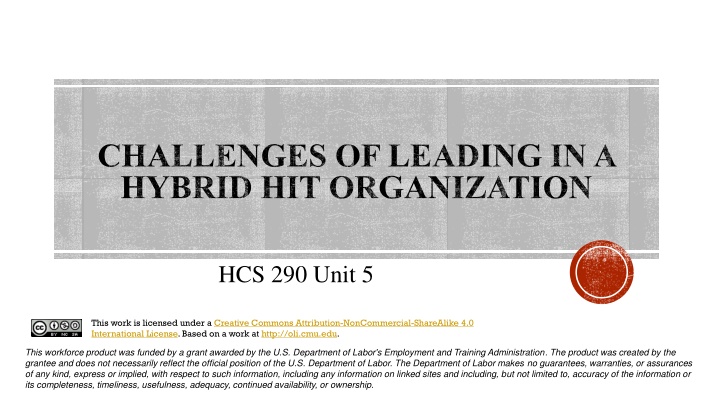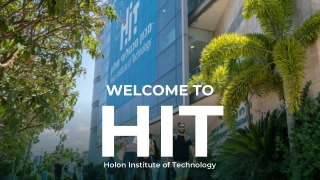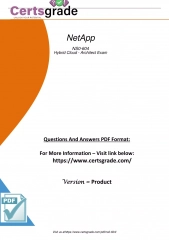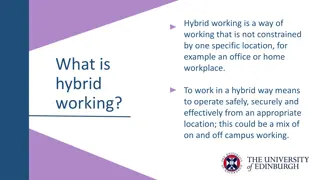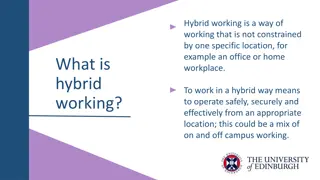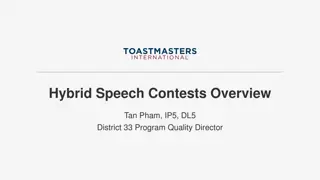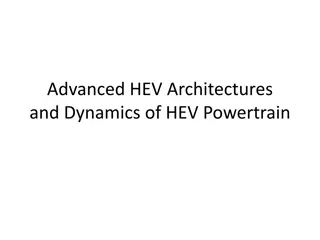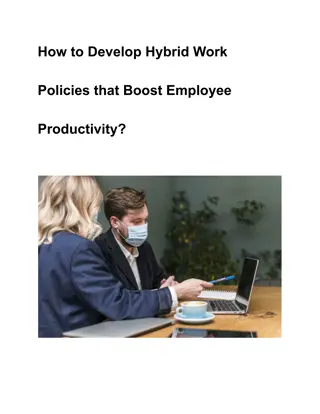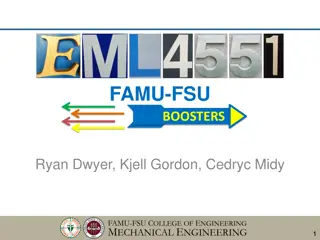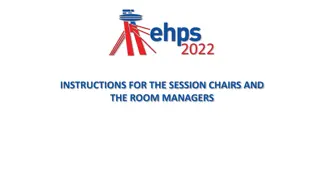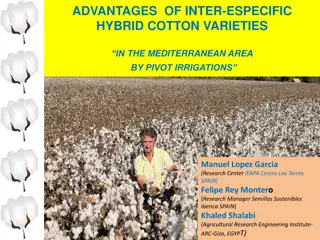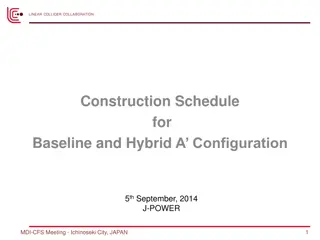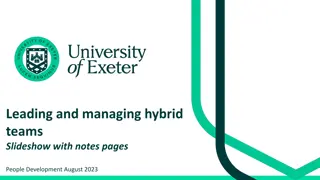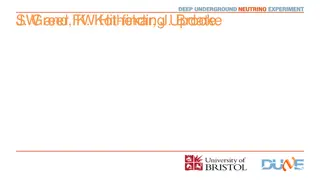Challenges of Leading in a Hybrid HIT Organization
Many organizations operate in a hybrid environment, balancing daily operations with future projects. Understanding three types of organizational structures - Functional, Project, and Matrix - is crucial for effective leadership. While functional organizations excel at routine tasks, they may struggle with project management due to coordination challenges. Clear strengths and weaknesses exist in the functional organizational structure, impacting project responsibility and integration speed.
Download Presentation

Please find below an Image/Link to download the presentation.
The content on the website is provided AS IS for your information and personal use only. It may not be sold, licensed, or shared on other websites without obtaining consent from the author.If you encounter any issues during the download, it is possible that the publisher has removed the file from their server.
You are allowed to download the files provided on this website for personal or commercial use, subject to the condition that they are used lawfully. All files are the property of their respective owners.
The content on the website is provided AS IS for your information and personal use only. It may not be sold, licensed, or shared on other websites without obtaining consent from the author.
E N D
Presentation Transcript
CHALLENGES OF LEADING IN A HYBRID HIT ORGANIZATION HCS 290 Unit 5 This work is licensed under a Creative Commons Attribution-NonCommercial-ShareAlike 4.0 International License.Based on a work at http://oli.cmu.edu. This workforce product was funded by a grant awarded by the U.S. Department of Labor's Employment and Training Administration. The product was created by the grantee and does not necessarily reflect the official position of the U.S. Department of Labor. The Department of Labor makes no guarantees, warranties, or assurances of any kind, express or implied, with respect to such information, including any information on linked sites and including, but not limited to, accuracy of the information or its completeness, timeliness, usefulness, adequacy, continued availability, or ownership.
THE HYBRID ENVIRONMENT Many organizations conduct the daily work of the institution while also planning and working on projects that will affect current operations and the future of the organization. This combination of business activities is referred to as a hybrid environment.
THREE TYPES OF ORGANIZATIONAL STRUCTURES The Project Management Institute (PMI) lists three types of organizations: Functional Project Matrix https://www.pmi.org/
THE FUNCTIONAL ORGANIZATION A common model for systemizing and structuring the work that an organization does is by function. Employees with similar work skills and similar work tasks are formally organized as groups. Most acute care hospitals are based on a functional structure with clearly defined roles and lines of communication. Functional organizations are good at performing the daily work that is required. When attempting a project or multiple projects, functional organizations often have difficulties. The functional organization, sometimes called a line organization, has been in existence for hundreds of years.
FUNCTIONAL ORGANIZATION STRUCTURE ; EXAMPLE
FUNCTIONAL ORGANIZATION STRENGTHS They use a stable hierarchical structure. Clear lines of authority and communication are established. Routine and recurring tasks are completed efficiently. Budget and cost controls are easier to implement. Individuals in various departments have functions and career paths that are clearly defined, and they have attained a high level of expertise. Production methods and processes are standardized.
FUNCTIONAL ORGANIZATION WEAKNESSES .No specific individual or team is responsible for a project. Project coordination and integration is slow and cumbersome. Project coordination between departments is slow. Project completion is generally longer in a functional organization. Conflicts can occur between departments. The department with the most clout often has undue influence on decisions. Conflicts can occur between functional managers and project managers over the use of resources. Functional organizations tend to be more resistant to change.
A PROJECTIZED ORGANIZATION The structure of a projectized organization is much different from the hierarchical structure of a functional organization. A projectized organization organizes its work around programs that are executed through projects. It assigns a significant amount of authority and responsibility to the project team and project manager. The manager and team are responsible for continuously monitoring and evaluating the project status. In most projectized organizations, the majority of the organization s resources are devoted to work on projects that are usually completed for an external customer.
PROJECTIZED ORGANIZATION STRUCTURE ; EXAMPLE
Projectized organizations may have elements in common with functional organizations, such as payroll and human resources, but most of the organizational structure in a projectized organization is dictated by the projects and related programs that the organization undertakes. The projectized organization must be flexible because the organization s structure can change according to the requirements of a particular project. Teams in a projectized organization tend to be more autonomous because the work assigned to each project team can be vastly different. For example, a construction company may be involved in multiple simultaneous projects. One team is implementing a project program for building a retail shopping center. Another team is constructing a performance hall on a college campus. Although both projects may have common requirements, the projects are dissimilar enough that each project team may employ different organizational structures and processes to complete the project.
Key characteristics of a projectized organization include the following: The organization is organized by project instead of functional departments. The project manager has a large amount of authority and manages both the project and the employees working on the project. The highest level of control resides with the project manager rather than with the functional managers. Divider
PROJECTIZED ORGANIZATION STRENGTHS The projectized organization is simple and efficient. Resources are focused solely on the project goals and objectives. Project teams are unified and cohesive as they work toward a common goal. Integration between project teams is superior because the focus is on project goals, not on areas of expertise
PROJECTIZED ORGANIZATION WEAKNESSES Project costs can be excessive because the team is packed with full- time resources. Some functions may be duplicated, which increases cost. If, as often is the case, the projectized organization is working with a client organization, an us against them mentality may develop. This attitude works against acceptance of the finished project. Self-contained teams can restrain the amount of skill and expertise available to the project team compared to a matrixed environment where resources rotate in and out more often. After a project is completed, the transition back to post-project work may be difficult for some employees.
A MATRIXED ORGANIZATION A matrixed organization combines the structures of functional and projectized organizations. The authority and leadership in a matrixed organization is divided between the functional manager and the project manager. When assisting in an implementation of a program associated with a particular project, an employee in a matrixed organization reports to both a functional manager and a project manager. The following chart depicts a matrixed organization with functional heads, including director of health services through director of operations across the top. The project managers are on the left. The intersecting boxes between functional heads and project managers emphasize the combined nature of project management and functional management in a matrixed environment.
MATRIX ORGANIZATIONS Matrixed organizations can be classified as: weak strong balanced.
WEAK (FUNCTIONAL) MATRIX When functional managers possess stronger authority than project managers, it is known as a weak matrix. A weak matrix may not even designate project managers. The leader of the project may be called a coordinator and may work only part time on the project. Because the project manager has little authority, interpersonal relationships between project leaders and functional managers are particularly important on weak matrix teams. An organization that employs weak matrix structures is usually not adept in handling projects.
Following are characteristics of a weak matrix project management structure: Project manager serves in staff position in an assisting role Project manager tracks the status of work done, develops schedules, and oversees but does not manage project tools and documentation Project manager facilitates but does not manage project completion Project manager has only indirect authority Functional managers have complete authority in assigning resources Technical expertise and quality are likely to be better than in strong or balanced matrix Functional managers are often better than project managers at managing resource conflicts between departments Can result in poor integration of projects
STRONG (PROJECT) MATRIX When the project manager possesses a high degree of authority, it is known as a strong matrix. With a strong matrix organizational structure, the project manager controls most elements of a project, including assignment of employees from functional departments. The site manager for a construction company is an example of a strong matrix. The manager coordinates all of the subcontractors and is ultimately responsible for the deliverable product. Although project managers cooperate with functional managers, the ultimate responsibility for every item related to the project is with the project manager. In a strong matrix, for the duration of the project, the functional managers cede control of resources to the project manager.
STRONG (PROJECT) MATRIX (CONT) In a strong matrix, The project manager controls what resources are assigned and when they are available. The functional manager retains control over the unit but is called on to provide resources when needed. Project integration is smoother, power struggles are less likely, and project tasks and expenses are better controlled than in other structures. The quality of the project may be negatively affected because functional components of the organization have less influence.
BALANCED MATRIX In a balanced matrix, the project manager and the functional manager have equal authority and power. The project manager is often embedded in the department and has a much deeper level of experience compared to a manager who is loaned to the department for the duration of the project. The project manager establishes what work needs to be done, and the functional manager assigns the resources and determines how tasks will be accomplished.
BALANCED MATRIX (CONT) Characteristics of a balanced matrix project management structure include the following: The project manager develops the project plan, tracks completed tasks, establishes and manages schedules, and monitors project progress. The functional manager assigns resources, including personnel and equipment, when needed within the framework of the guidelines and schedule built by the project manager. The project and functional managers collaborate to approve technical and operational decisions. This plan works well only if the project and functional managers communicate well. The project manager must be aware of and sensitive to the functional work of the organization, and the functional manager must be attuned to the requirements of the project. Otherwise, conflicts will arise and the project may fail.
FLEXIBILITY IN PROJECT MANAGEMENT As depicted in the following photograph of a medical building, manufactured, or prefabricated buildings. have gone through dramatic changes in the last half century. The project management process for erecting a manufactured building is very predictable and lends itself to using a linear and traditional form of project management. Obtaining permits, preparing the site, pouring the foundation, and erecting a building constitute a well-developed process that would, under normal conditions, produce predictable outcomes.
FLEXIBILITY IN PROJECT MANAGEMENT (CONT) The project management model that works so well for assembling and erecting a manufactured building may not be at all suitable for a software project. Robert Wysocki, in his book Effective Project Management: Traditional, Adaptive and Extreme,maintains that using only one project management method during the life cycle of an information technology project may not succeed. He states that using different management methods during the life cycle of the project can be appropriate and effective. As stated previously, a hospital may have many projects and project plans operating simultaneously. These projects must be managed. Management of multiple projects is called project portfolio management (PPM). Each project has unique characteristics that may require application of different management methods. Three of these methods are traditional, Agile software development, and Extreme Programming.
WATERFALL MODEL The traditional management process works well for projects that follow a structured planning and/or monitoring process, sometimes called the waterfall model. The waterfall model contains few iterative processes and is typical of a linear, traditional project management method. The waterfall model has its origins in construction and manufacturing. These are highly structured industries where repeated processes such as revisiting and revising plans, after project implementation, can be enormously expensive.
WATERFALL MODEL CC BY-NC-SA by ONC
AGILE METHOD Agile software development involves elements that are much different from the traditional waterfall method of project management. The customer should be involved in the development process to provide feedback on the project as it is developed. With customer involvement, the process is responsive to the ultimate end user of the product. Problems, specification errors, and misdirection can be detected early on at little cost and without wasting resources. The Agile method is iterative such that a development process (analysis, code, test) will be repeated until it is completely correct before the project advances. The Agile method would probably not work well for construction of the building mentioned earlier. Pouring, tearing out, and repouring a foundation until it is absolutely perfect is prohibitively expensive and wasteful. CC BY-NC-SA by ONC
AGILE METHOD CC-BY by CAST
AGILE METHOD The Agile method is a commonly applied project management method in the software industry. The Agile Manifesto We are uncovering better ways of developing software by doing it and helping others do it. Through this work we have come to value: Individuals and interactions over Processes and tools Working software over Comprehensive documentation Customer collaboration over Contract negotiation Responding to change over Following a plan
AGILE METHOD Common elements of Agile developmentinclude the following: Active user involvement is imperative. The team must be empowered to make decisions. Requirements evolve, but the timescale is fixed. Capture requirements at a high level lightweight and visual. Develop small, incremental releases and iterate. Focus on frequent delivery of products. Complete each feature before moving on to the next. Apply the 80/20 rule A collaborative and cooperative approach between all stakeholders is essential.
EXTREME PROGRAMMING Nontraditional methods such as Extreme Programming often involve the users/customers of the completed system. Ron Jeffries, one of the three founders of Extreme Programming, describes the approach in an article What Is Extreme Programming? : A team approach is formed around the customer who works with the team on a daily basis. This contrasts to the traditional method where project requirements are written in conjunction with the customer and then the customer is seldom consulted once the project begins. The focus is on the whole team. Extreme Programming focuses on the business value of what is planned and what will be done. Software is produced in a succession of fully integrated releases that have been fully approved by the customer.
KEY TERMS ASSOCIATED WITH EXTREME PROGRAMMING Whole team Planning game Small releases Customer tests Simple design Pair programming Test-driven development Code improvement Collective code ownership Sustainable pace
TIMEBOXING Both Agile project management and Extreme Programming often use a technique called timeboxing. Fixed time periods, or timeboxes, are allocated to every activity in the plan. The focus is on short-term tasks and incremental deliverables. Rather than working until the task is finished, the timebox method requires stoppage of work at the time limit and examination of what has been completed. A key element of timeboxing is improving the productivity of the developer.
